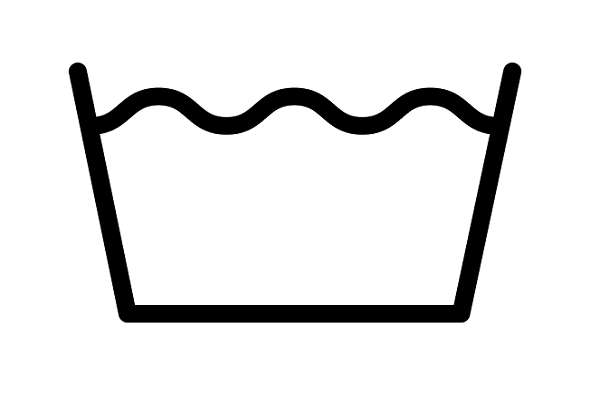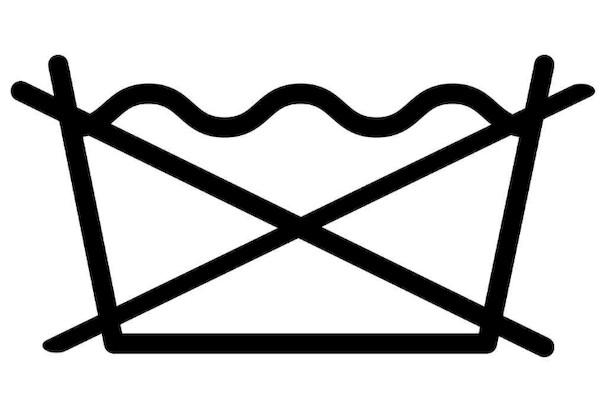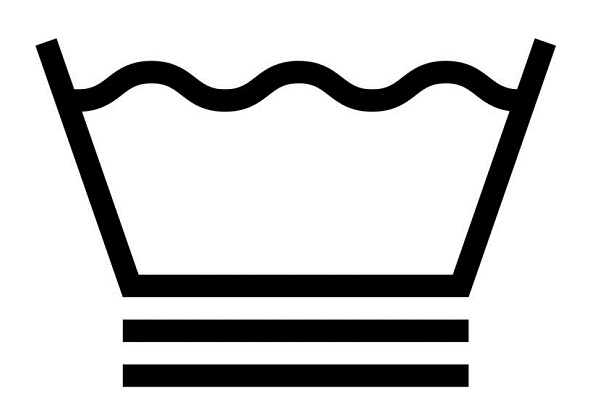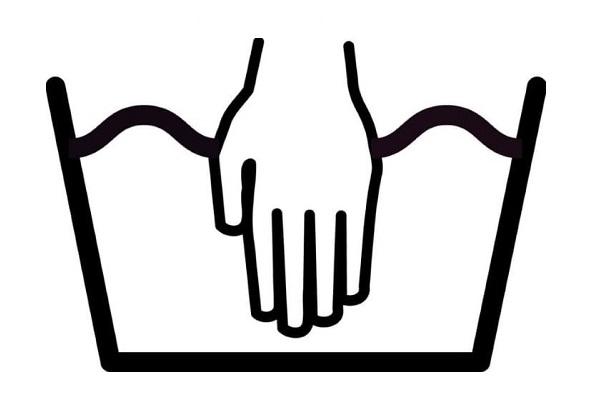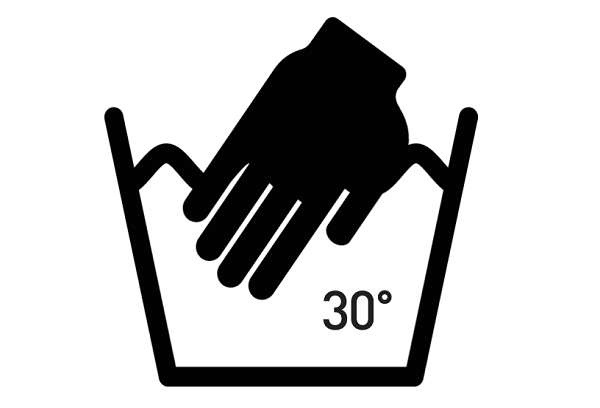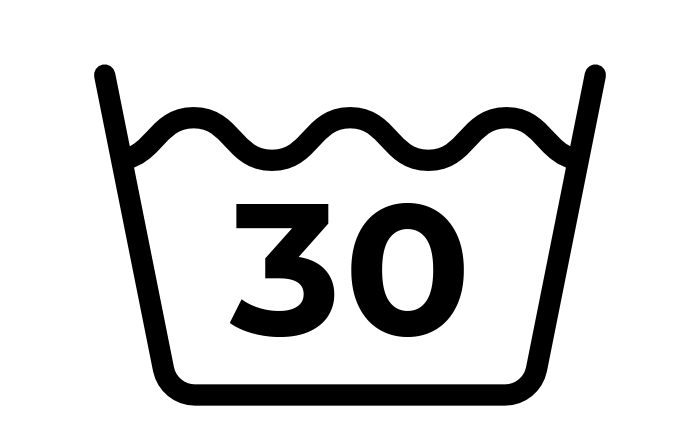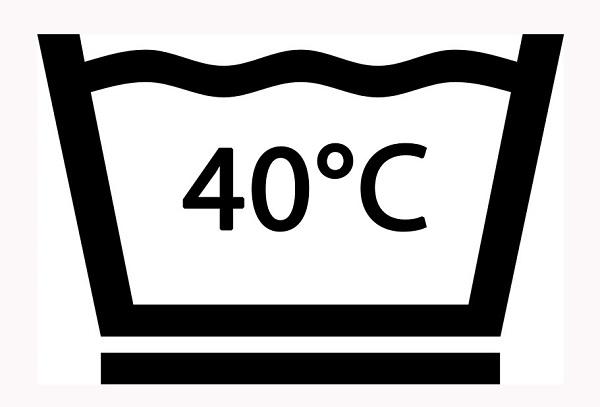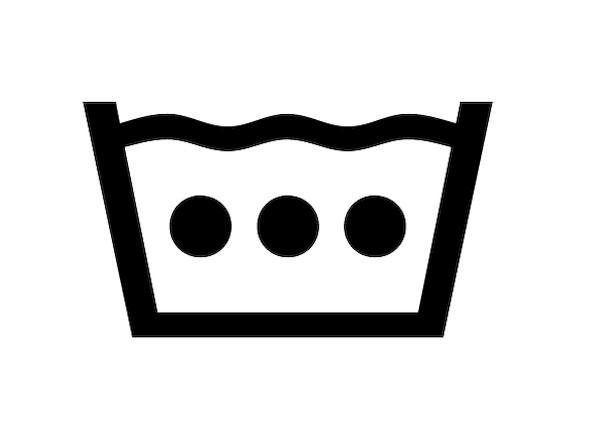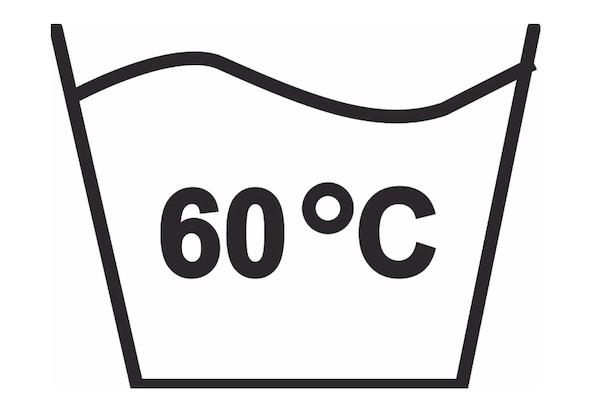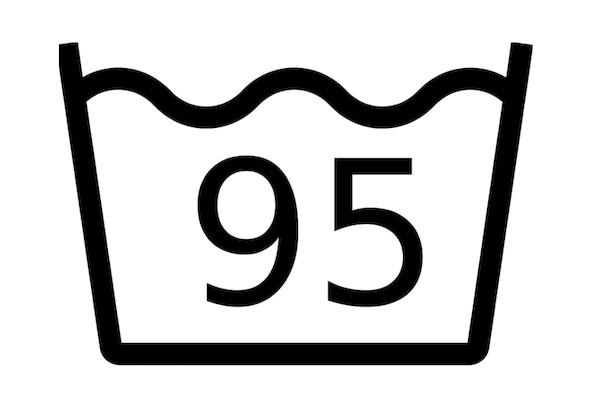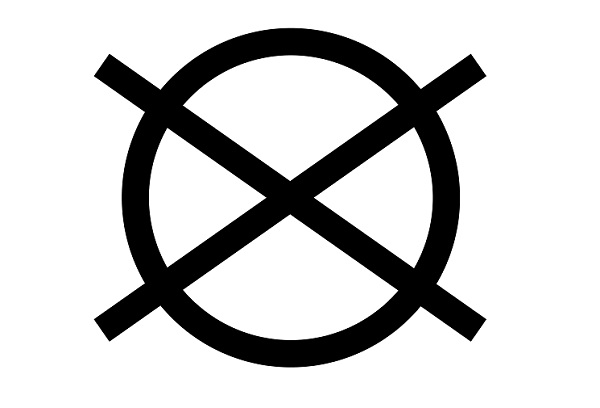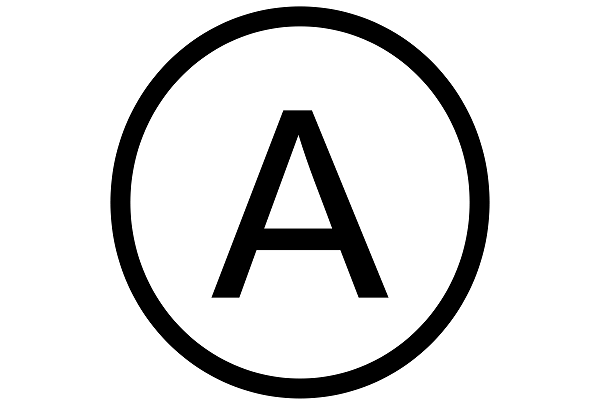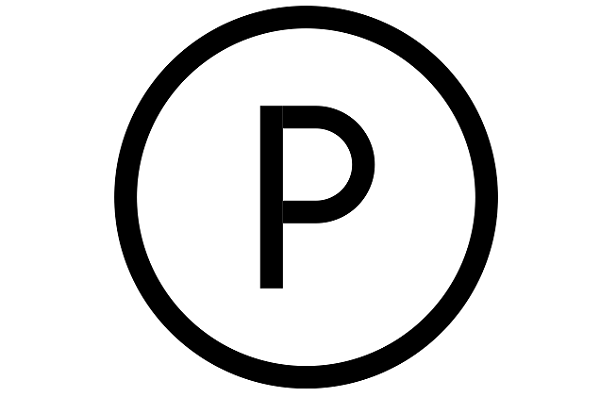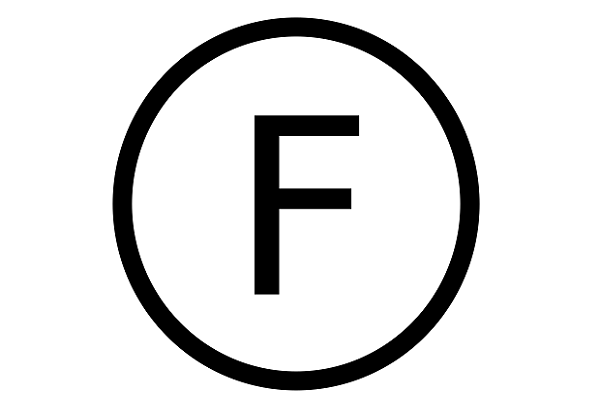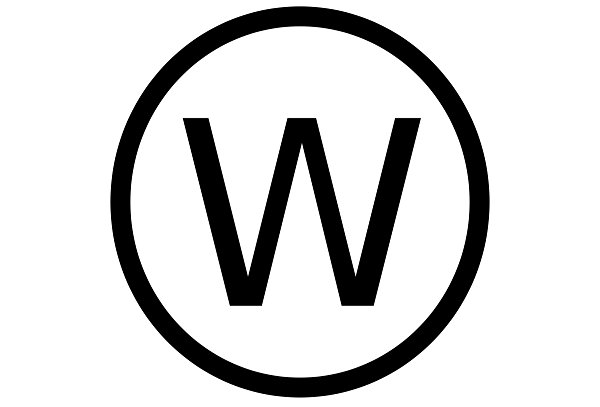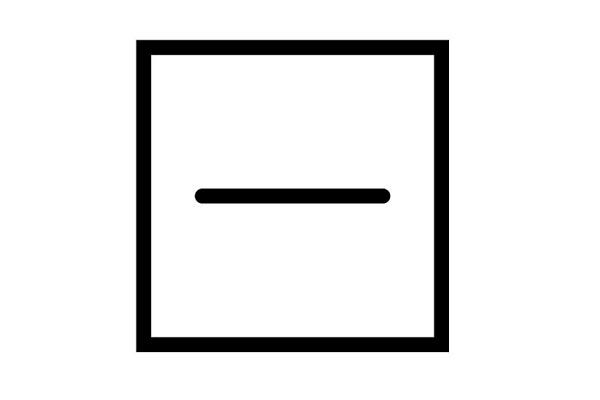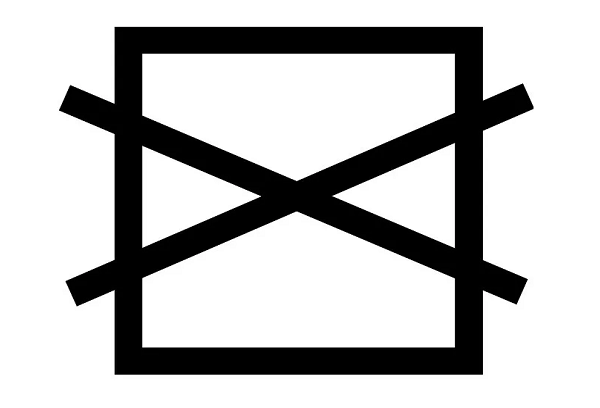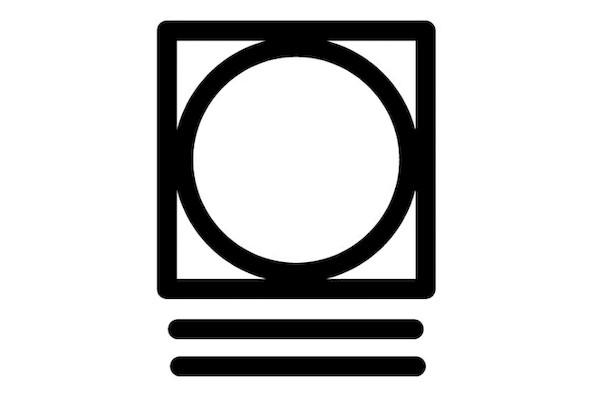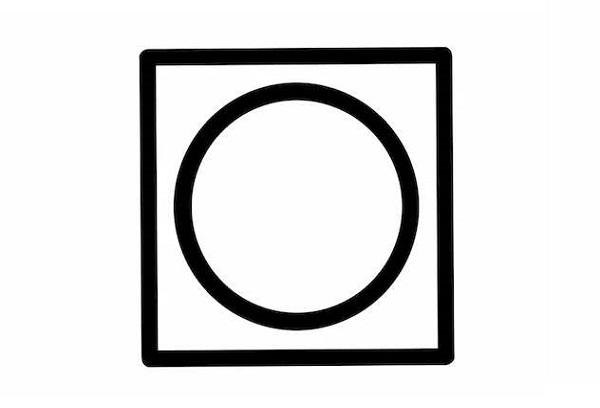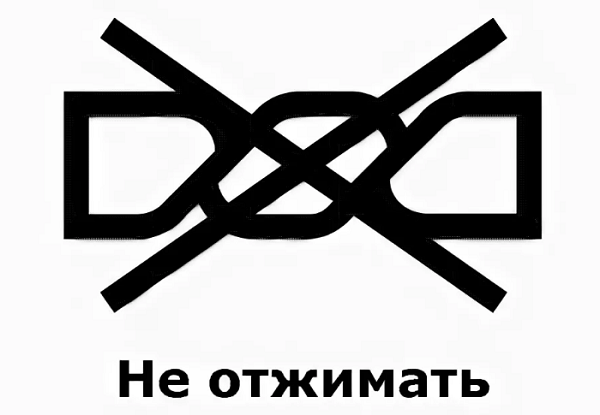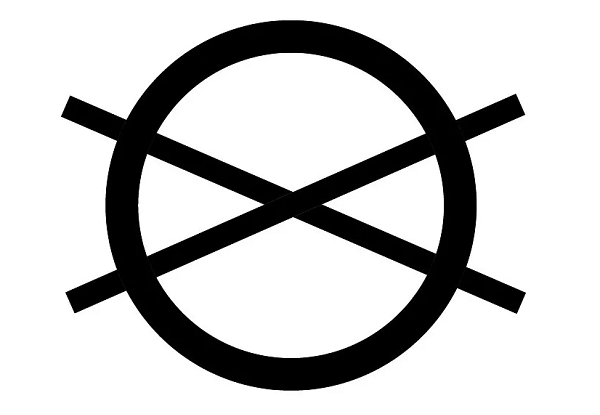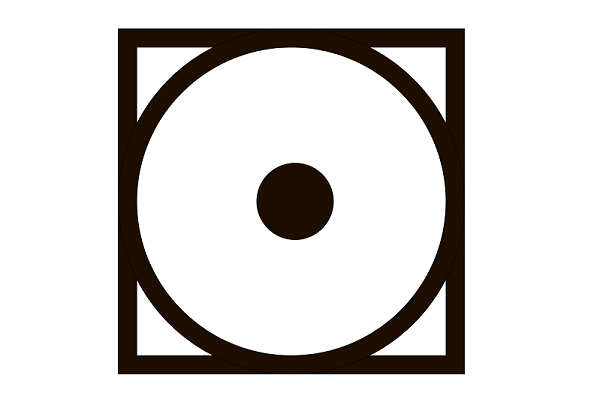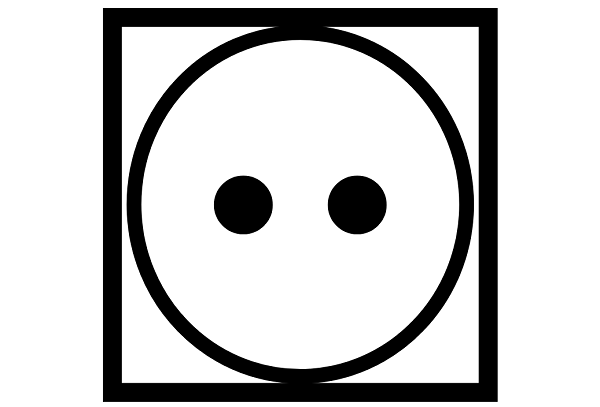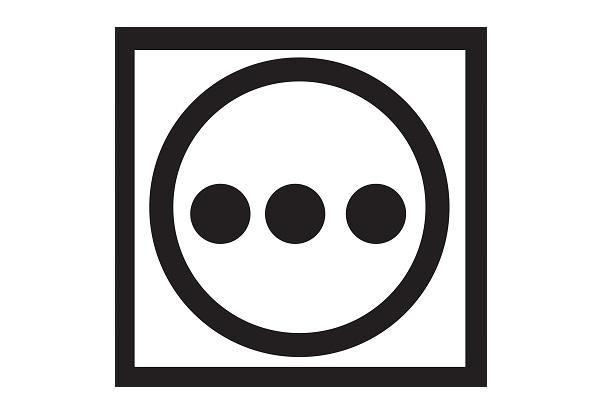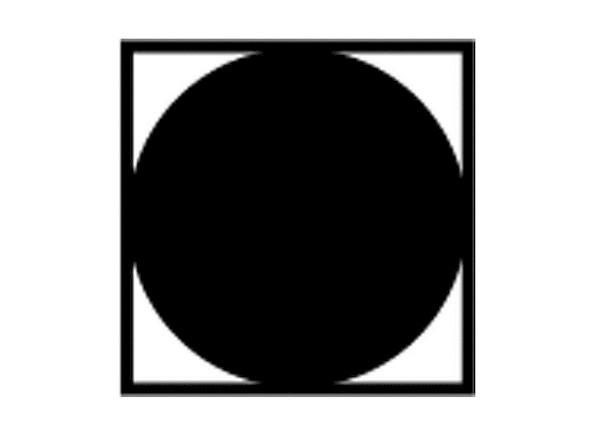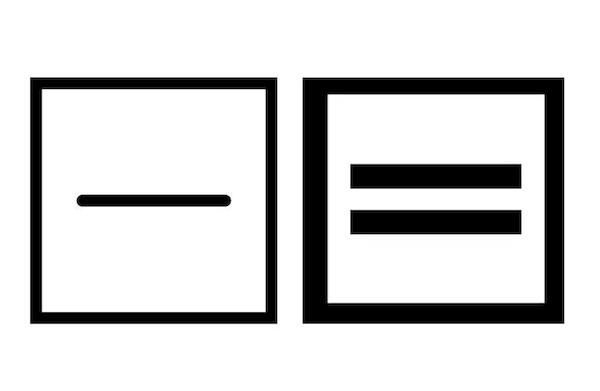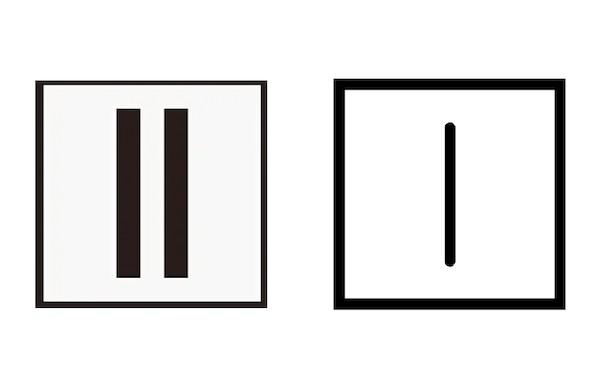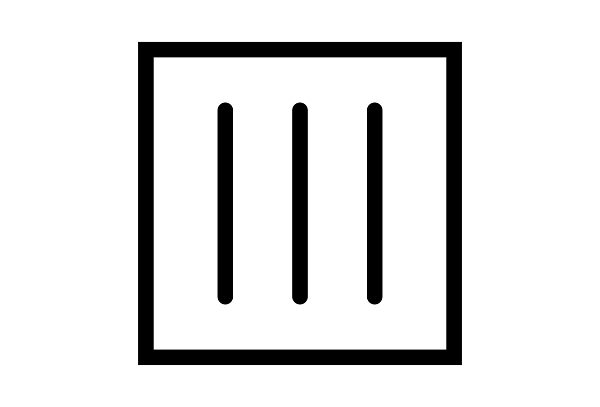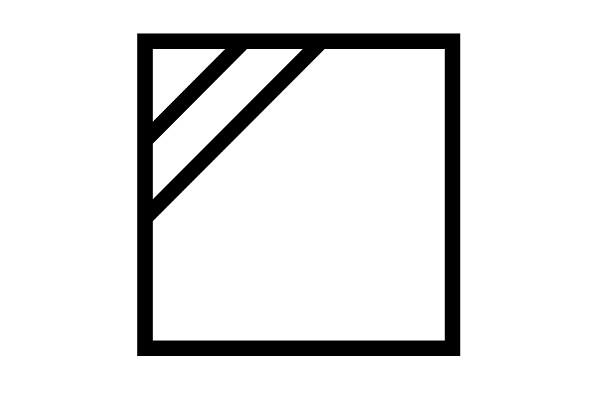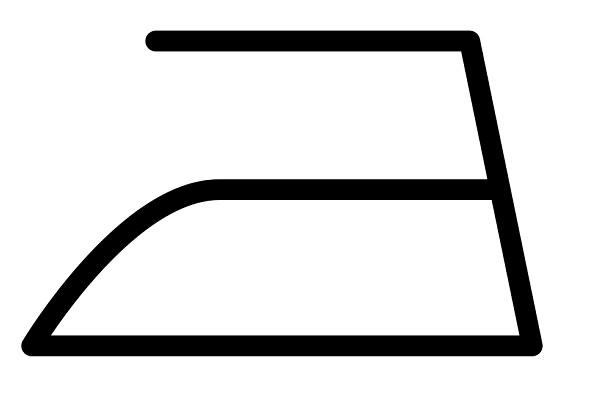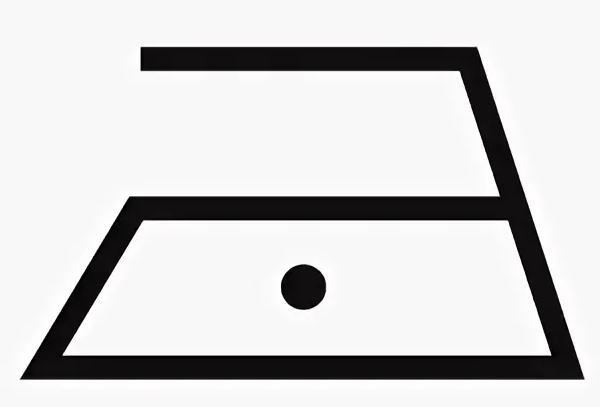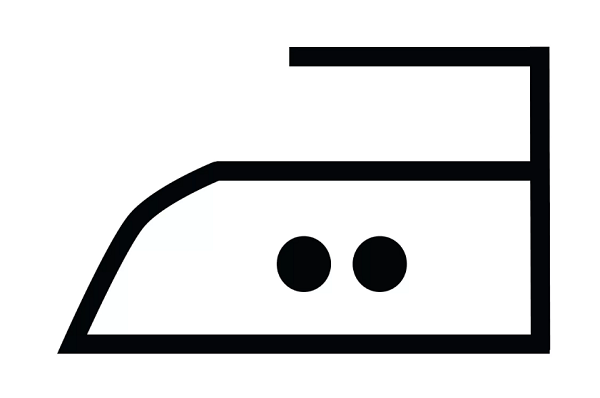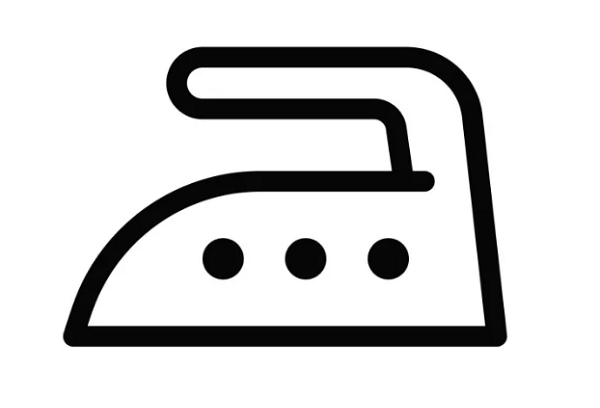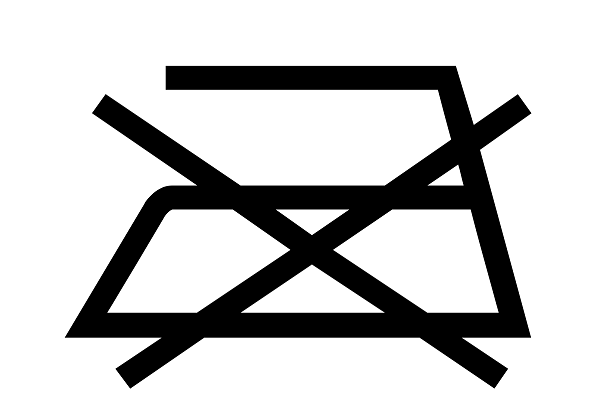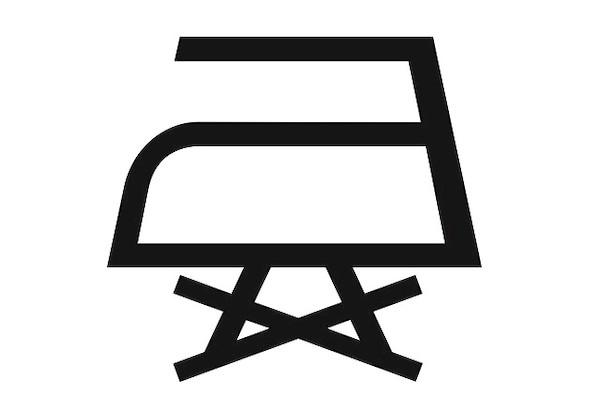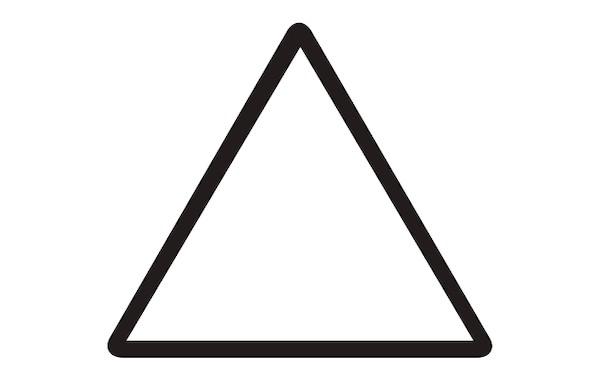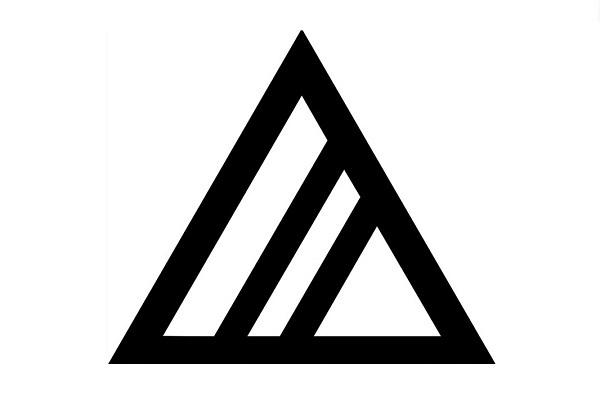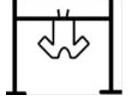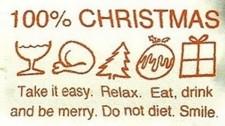Icons for washing on clothes - interpretation table for Russia
To ensure that the item does not suddenly fade or shrink, but remains just as attractive, you should pay attention to the washing symbols. They are printed by the manufacturer on labels that are placed on the inside of the products. Deciphering the washing symbols on clothes takes a minimum of time. The signs are divided into 5 categories: washing, dry cleaning, spinning and drying, ironing, bleaching.
Wash
The first thing you should study on the label is the icons for washing clothes. This is a basic care routine that removes dirt, dust, sweat and stains. At the same time, it is important to preserve the brightness of the fabric's color, its structure, shape and elasticity.
Machine washable sign
Can be washed with any detergent and at any temperature. Clothes can be subjected to mechanical stress and soaked. All normal modes are available.
The sign cannot be washed in a washing machine.
A crossed out basin means that the product cannot be washed independently. Such items must be professionally cleaned. The badge is often found on outerwear.
Delicate wash
The “basin with two lines” pictogram indicates the need for particularly careful washing:
- in delicate mode;
- minimal mechanical impact;
- increased amount of water;
- short rinse cycle;
- without spin.
Hand wash sign
The product should not be rubbed or squeezed. It should be washed by hand or in the appropriate washing machine mode. Max water temperature – 30-40°C. The badge is used on clothes made of delicate fabrics.
Sign hand wash at 30 degrees
Hand washing should be done at a water temperature of 30°C or lower. Mechanical impact is minimal. Clean as gently as possible.
Wash at 30 degrees sign
The item must be washed in a washing machine or by hand at a maximum water temperature of 30°C. It feels like cold water. To effectively clean clothes, you should use products that dissolve well and are active at low temperatures.
Wash at 40 degrees sign
Wash in warm water with standard detergents. Max t – 40°C. You can use products for colored laundry.
Hot wash sign
Max water temperature – 50-60°C. In hot water you can wash white items, clothes made of cotton, viscose, nylon, and mixed materials. Colored fabrics must be dyed with permanent dyes.
Wash at 60 degrees sign
Can be washed in hot water at 60 degrees in a machine and by hand. Suitable for products not resistant to boiling. Can be used to remove stubborn stains on towels, bed linen, tablecloths, and cotton underwear.
Wash at 95 degrees sign
It is allowed to use the boiling mode with a water temperature of 90-95 degrees. Boiling should be used in emergency situations. For example, for disinfection of clothing and personal hygiene items (towels, bed linen) after an infectious disease.
Dry cleaning. Professional cleaning (dry and wet)
This category of badges is intended for dry cleaning specialists.Markings on the label help workers choose the most effective chemical composition and method of cleaning the product that will not damage the fabric.
Dry cleaning sign
Dry cleaning symbols are located in a circle. Circles can contain elements:
- Latin letter - the first letter of the name of the solvent or possible method of professional cleaning;
- one or two lines – gentle or delicate cleaning;
- strikethrough (cross) – prohibits one or another method of dry cleaning, chemical agent, procedure in principle.
The average person should pay attention to the pictures of dry cleaning to know which company to contact. For example, water cleaning services are not provided everywhere.
Dry cleaning prohibited sign
If the empty circle is crossed out, cleaning with chemical solvents is not permitted. The manufacturer does not guarantee that the item will not be damaged during processing. Specialists can take clothes into work only with the consent of the customer.
Cleaning sign using any solvent
Normal dry cleaning can be used. All possible organic solvents are allowed to be used.
Sign for the use of solvents based on ethylene chloride and hydrocarbons
Traditional dry cleaning method. Dry cleaning with reagents based on perchlorethylene, tetrachlorethylene and all solvents permitted for the F sign in a circle (hydrocarbons) is allowed.
Hydrocarbon Solvent Use Symbol
Dry cleaning can only be carried out with hydrocarbon solvents (trifluorotrichloroethane). Otherwise called KWL. Considered the safest.
Professional water cleaning (wet)
An alternative to dry cleaning. An eco-friendly way to care for things. Manufacturers use the letter W in a circle to indicate the possibility of wet cleaning.The procedure is similar to classic washing, but surpasses it in efficiency.
No wet cleaning sign
A crossed out dark circle and a circle with the letter W mean that the product is contraindicated for professional wet cleaning.
Spin and dry
After removing the stains from the clothes, they should be properly wrung out and dried. Labels and tags tell you how to do it correctly in the dryer and in the air.
Drying sign
The icon for drying and spinning is a square. How the item can be wrung out and dried depends on its filling:
- circle - in a dryer or washing machine;
- circle with 1, 2, 3 dots – recommended drying temperature in the machine;
- lines in the center - the location of the item during natural drying (vertical or horizontal);
- the symbol is underlined 1 or 2 times - gentle or delicate drum drying, limiting mechanical impact.
Drying prohibited sign
An empty crossed out square means that any drying of the product is prohibited. Typically used in conjunction with the "cannot wash" symbol.
Spin sign
The dryer icon (square with a circle) allows the drum spin. If the icon is underlined, the number of revolutions must be reduced.
Tumble dry sign
Products can be dried in a washing machine and dryer. The mode is standard, unless otherwise indicated. You can use an electric dryer.
No wringing sign or wringing prohibited
The twisted crossed out sign prohibits manual push-ups. The product must not be twisted. A crossed out dryer means that clothes cannot be spun in a spinner.
Drum drying prohibited sign
The product must not be dried in machines. Air dry only.
Low temperature drying sign
Drum drying is allowed at a maximum heating temperature of 40°C.Items should be dried and wrung out at low temperatures.
Normal drying sign
You can use the normal cycle of the dryer. Max drying temperature 60°C.
High temperature drying sign
Intensive drying and squeezing in a centrifuge is allowed. Maximum heating – up to 80 degrees.
No heat drying sign
Tumble dry with cold air. Do not turn on the heating.
Sign to dry on a horizontal surface
Natural drying in a ventilated area. Straighten and place horizontally.
Vertical drying sign
To dry, items must be placed vertically. Air dry clothes on a line or hanger.
Drying without spin sign
The item should dry naturally. Do not squeeze. Allow excess moisture to drain.
Sign to dry in the shade
Natural drying. Hang to dry in the shade. When drying, protect clothing from direct sunlight.
Ironing
The iron icon is easily recognizable. The symbol shows how hot the iron can be and whether the product should be steamed. Some fabrics cannot be ironed as they easily melt when heated.
The sign can be ironed
Ironing is allowed at any temperature, with or without steam.
Low temperature ironing sign
You can iron only with minimal heat on the soleplate of the iron. Recommended temperature is about 100°C. The mode is used for acetate, acrylic, polyamide fabrics that are ironed through gauze or a cotton pad.
Ironing symbol at medium temperature
Iron at max temperature of the iron sole 150°C. You can use normal heat when ironing.
High temperature ironing sign
You can iron clothes at a high temperature of about 200°C. The mode is suitable for thick cotton, denim and linen. Steaming or ironing while slightly damp is recommended.
No ironing sign
Ironing is not permitted. The item should not be ironed. The symbol is used on pile and crinkled fabrics, leather, leatherette, suede.
Do not steam sign
The product should not be steamed. Before ironing, you must turn off the steam function.
Whitening
Symbols from the bleaching category are intended for products made of white fabric. Some items that have turned yellow, gray or stained can be restored to their original whiteness and freshness.
Sign allowed to bleach
You can bleach the product with any chemical bleach. Bleaching is allowed.
No bleaching sign
The product cannot be bleached. Do not use any bleaches or powders containing chlorine.
Chlorine-free bleaching sign
When bleaching, do not use chlorine. It is recommended to use bleaching products that do not contain chlorine - oxygen bleaches.
Rare pictograms and their meaning
Rare pictograms include those that are no longer used or are practically never found on clothing labels:
- squares with lines inside: dry without spinning, in the shade, on a line;
- circle with a diagonal line: dry cleaning icons, meaning a shortened cycle, “no final steam” and other subtleties;
Additional characters: short cycle Additional signs: low temperature Additional signs: low humidity Additional characters: no final pair - unique manufacturer pictograms, including those with the humorous meaning “not edible”, “you won’t be able to fly if you wear this” (T-shirt, Superman costume).
Dryer Drying on a clothesline 100% Christmas. Relax. Eat, drink and be happy. No diets. Smile
Additional signs
Complementary symbols are considered to be horizontal underlines and cross-crosses.
| Additional icon | What does it mean |
 |
Gentle operation mode |
 |
Delicate operation mode |
 |
Operation prohibition |
Specific symbols for clothing care in other countries
On the labels on clothes we see signs of international format. They are used in all countries. Different manufacturers may have slightly different icons, but the pictures remain recognizable. Specifics of clothing labeling in different countries:
| China | Typical symbols of the same color. Below there may be important explanations in hieroglyphs |
| USA | For a long time they used not only icons, but also letter instructions. Today the number of words is minimal, and the symbols are arranged in the order: washing, bleaching, ironing, dry cleaning, drying |
| Europe | The icons are arranged in a strict sequence (the same as in the USA) |
| Canada | Until 2003, permitting icons on the tag were green, prohibiting icons were red, and warning icons were orange. Today, clothes are labeled in a unified international format |
| Australia | The country uses basic label designations. Warning icons may be highlighted in red, others are blue. |
| Japan | Prohibitory symbols in red on a white background. Other icons are black or dark blue. If the product does not need to be ironed, there is no “iron” |
Translation of English symbols
Under the graphic symbols on the labels there are often words in English. Letter markings complement the pictograms.
| Inscriptions | Values |
| Hand wash only | Handwash |
| No (Do not) wash | Washing ban |
| Machine wash | Machine washable |
| Wash separately | Wash separately (dye is not fast) |
| Hot/Cold/Warm wash | Wash in hot/cold/warm water |
| No (Do not) bleach | Can't bleach |
| No (Do not) dry clean | Cannot be cleaned with chemicals |
| No (Do not) iron | Ironing is prohibited |
| No (Do not) wring or twist | You can't twist it |
| No (Do not) tumble dry | Cannot be dried in a centrifuge |
| Dry in shade | Drying in the shade |
Recommendations for product care
The care features recommended by the manufacturer do not replace the standard rules.
- Removing adhering debris and dust from products before washing. If there are holes, repair. Removable decorative elements must be removed.
- Pre-removal of difficult stains.
- Sorting items before washing by color (white, black, colored laundry), type of material (delicate or not).
- Free placement in the drum. The washing machine should not be filled to capacity.
- Store clothes in a closet, clean and ironed, away from sunlight and at a relative humidity of 50-70%.
- To store outerwear, fur items, evening dresses, use individual breathable covers.


The durability of clothes largely depends on whether we read the information on the labels before we start the wash. First of all, you need to track the symbols that prohibit this or that method of care. For light stains and wrinkles, you should always choose gentle washing and ironing. It must be remembered that any intensive regime harms the fibers and reduces the strength and elasticity of the fabric.
- What does P mean in a circle on clothes: explanation and care recommendations
- What does f mean in a circle on clothes: explanation and care recommendations
- What does the no-spin icon mean (a crossed out twisted thing): you can’t squeeze it in a centrifuge or with your hands, full explanation of the symbol
- What does the “dry cleaning prohibited” icon (crossed out circle) mean: explanation and care recommendations
- What does the low-temperature drying icon mean (a square circle with a dot): explanation and care recommendations
